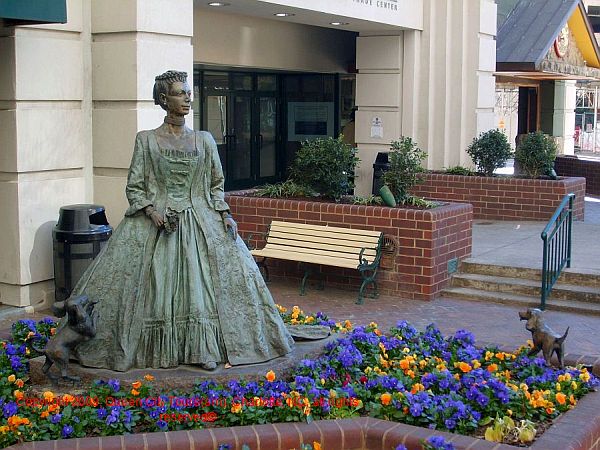Jay -- Who/what was your early inspiration to/in write/writing?
Dr. Pinkney -- I think having to read and memorize
poetry and Prose inspired me to realize that I could speak and interpret
the word. I like to read and express myself orally and that led to my
beginning to express myself in writing. People started praising my
writing and I discovered that I could also express myself in
writing.
Jay -- Do you regret not being able to attend school on Miami Beach --
because of segregation?
Dr. Pinkney -- No. My parents lived on Miami Beach
because they were caretakers for the people they worked for. They lived
in the servant’s quarters which were a very nice place. My brother,
Israel Curtis was born on Miami Beach in the servant’s quarters
where my parents worked at 4609 Pinetree Drive. I think that was the
address. The Dade County Bureau of Vital statistics refused to put Miami
Beach on his birth certificate because he was black. He died and his
birth certificate was never corrected.
Jay -- You faced covert segregation while living in Chicago as opposed to
overt discrimination here in the south. Is there a difference now that
you are older and wiser?
Dr. Pinkney -- I see the same thing happening in a
different form. People in the North often feel that they are not subject
to segregation because it is not overt and they misinterpret the hidden
sides of discrimination because it is not Overt. When I was moving back
to Miami, many of my friends asked me how could I move back to Miami
after living in Chicago. I did not see much difference. I saw racial
prejudice minus the white and colored signs. I would rather deal with
segregation outright than be under the delusion that it does not exist
and miss the innuendos of segregation that are often subtly
expressed.
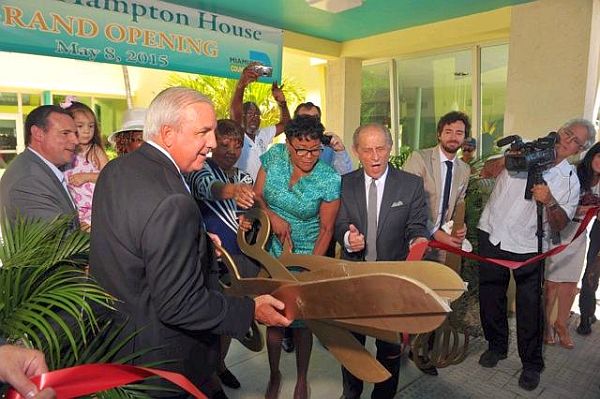
Jay -- A Jewish couple owned
the original Hampton House. What are their names and are their relatives
still in the Miami area?
Dr. Pinkney -- They were Mr. and Mrs. Harry Markowitz.
Their sons, grandsons and daughter-in-laws were at the Grand Opening this
past May [2015].
Jay -- A plethora of now Black/African-American history-makers have used
the Hampton House as their local abode -- due to segregation -- to
include Dr. King (Civil Rights Leader), Malcolm X (Nation of Islam),
Muhammad Ali (Heavyweight Boxing Champion), Joe Louis (Heavyweight Boxing
Champion), and Althea Gibson (Tennis Star). Which icon gets the most
attention from visitors’?
Dr. Pinkney -- They like to know about Dr. Martin Luther
King and Muhammad Ali. We are going to replicate their rooms as a part of
the museum.
Jay -- In 2001 Ms. Kathy Hersh re-introduced the now historic Hampton
House Motel/Villas to your African-American Committee of the Dade
Heritage Trust via video. In hindsight, did you believe then that you
would live to see it revitalized?
Dr. Pinkney -- No. I did not understand back then what I
was getting into and where the desire for historic designation of the
building would lead.
Jay -- What was your primary motivation in spearheading the effort to
renovate the historic Hampton House in Miami, Fl.?
Dr. Pinkney -- This was the only motel left in Miami
from the days of segregation. If it had been demolished as planned, we
would have nothing of its kind to show what it was like to future
generations. I like for people of today to connect to the history of the
past.
Jay -- At any time, since 2001, did you think that this project was not
feasible?
Dr. Pinkney -- No I have faith in God and I always asked
him for guidance and direction in whatever I do. I felt that it could
happen but it was very difficult to make it a reality.
Jay -- Did you personally attend any events at the Hampton House back in
the day?
Dr. Pinkney -- Yes. That is why it meant so much to
me.
Jay -- If yes, what is your most memorable event and why?
Dr. Pinkney -- I remember eating there and enjoying
social events such as dances and meetings.
Jay -- It was decided not to re-open the now historic Hampton House
[opened in 1953] as a motel/villa. Why?
Dr. Pinkney -- Because of the expense of doing so. There
was and still is not enough money to complete it. We are still trying to
raise 2 million dollars to complete it. The Current standards for
plumbing and electricity was beyond what we thought we could raise to
bring it back and we settled for what we have rather than have nothing at
all. We could not replace the swimming pool either. We have a reflective
pool.
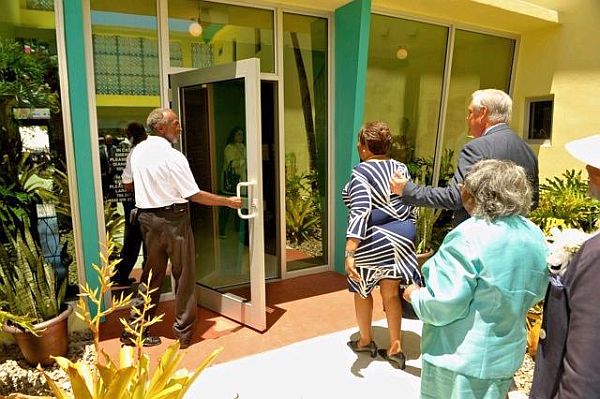
Jay -- You turned the project
over to Miami-Dade County because of lack of funding. What concessions
did you have to make to get the county involved?
Dr. Pinkney -- We are governed by a lease from
Miami-Dade County . They are the owner of the building. We are pleased
with the arrangement because we had no money and they have put nine
million dollars in the project. We are grateful to Commissioner Audrey M.
Edmonson, District 3 of the Miami Dade County Commission who gave
leadership to the progress and funding of the Hampton House. We are also
grateful to Commissioner Barbara Carey Shuler for getting us
started.
Jay -- Why did it take so long (2001 – 2015) for this project to
come to fruition?
Dr. Pinkney -- The County was very slow and we had to
wait for them for everything.
Jay -- Describe your emotions during the dedication ceremony on Friday
May 8, 2015?
Dr. Pinkney -- I was very happy that we have come this
far even though the building is not completed. We have come a long
way.
Jay -- The now historic property is a community hub with a museum. Future
plans include space for a restaurant, motel rooms being converted into
office space for community groups, and recording studios and rehearsal
space for musicians. What are you most excited about?
Dr. Pinkney -- I am most excited that a dream has become
a reality and we will have a place in the black community that can be of
service to the community.
Jay -- How do you plan to market this venue to tour operators?
Dr. Pinkney -- We need a marketing company and are
looking for one to market what we have to the world.
Jay -- What final thoughts would you like to add to this interview?
Dr. Pinkney -- I am proud of you and that you have given
me this opportunity to share my thoughts, and experience with a wider
audience. Thank you for the exposure.
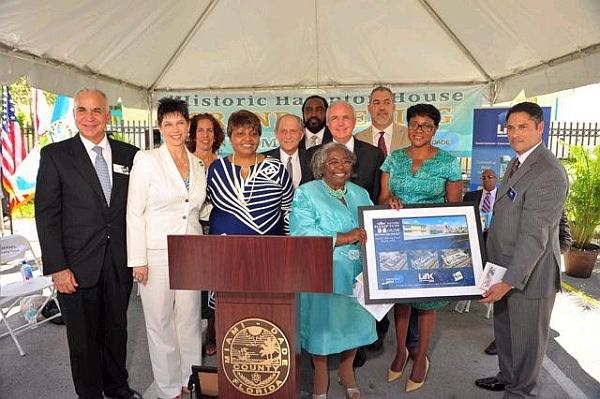
Jay -- What is the best way
to contribute to this historic venue?
Dr. Pinkney -- We are in need of funds to complete the
building and to operate it. Tax deductible donations can be sent to
Historic Hampton House Community Trust, Inc. , 2525 N. W. 62
nd
Street #4132B, Miami, Florida 33147.
2022 Updates!

The
Historic Hampton House served as the setting for the triple
Academy-Award nominees flick
One Night in Miami which presents a fictional rendition of a historic meeting of
Civil Rights icon
Malcolm X, legendary soul singer
Sam Cooke, three-time boxing world champion
Cassius Clay (Muhammad Ali), and football star and actor
Jim Brown on the night of
February 25,
1964, after
Clay's upset victory over then champion
Sonny Liston at the
Miami Beach Convention Center. This film was directed by
Academy Award-Winner Regina King.
Black History Month February 2022!
The
Hampton House has a host of special events scheduled to include a
Brownsville Community Forum, Inauguration of
"Immortalizing a New Gebneration," Exhibition Reception,
and much more...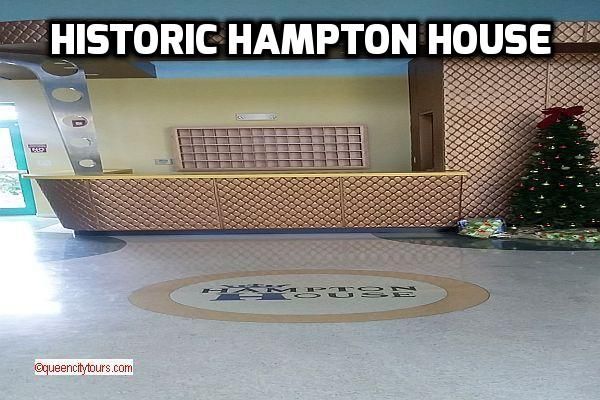

 Even more ironic is the fact
that I am related to one of the persons responsible for the
gentrification of this old building. I grew up knowing her as
Aunt Enid and her late brother (my Uncle)
Isreal is the first Black Pressman to
work at the old Miami Herald building off
Biscayne Boulevard in Downtown Miami.
His oldest son (Kenneth) was employed there since the late
1970’s/early 1980’s and is
responsible for the professional photographs appearing in this article.
Dr. Enid Curtis Pinkney has been a champion for historic
preservation since the better part of the 21st
Century and has been instrumental in saving the now historic
Lemon City Cemetery and the uncovered Native
American burial ground now known as the Miami Circle in
Downtown.
Even more ironic is the fact
that I am related to one of the persons responsible for the
gentrification of this old building. I grew up knowing her as
Aunt Enid and her late brother (my Uncle)
Isreal is the first Black Pressman to
work at the old Miami Herald building off
Biscayne Boulevard in Downtown Miami.
His oldest son (Kenneth) was employed there since the late
1970’s/early 1980’s and is
responsible for the professional photographs appearing in this article.
Dr. Enid Curtis Pinkney has been a champion for historic
preservation since the better part of the 21st
Century and has been instrumental in saving the now historic
Lemon City Cemetery and the uncovered Native
American burial ground now known as the Miami Circle in
Downtown.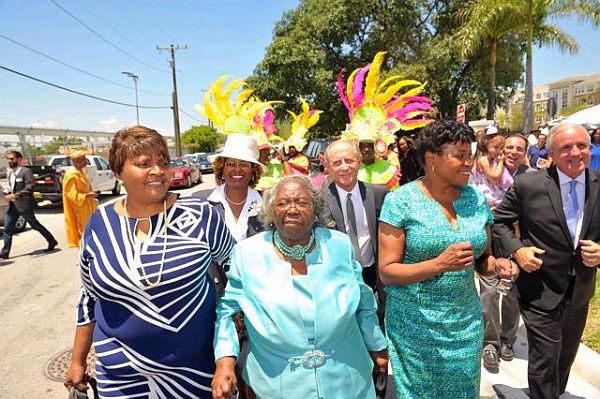 Jay -- Of all of your
educational accomplishments, which are you most proud of?
Jay -- Of all of your
educational accomplishments, which are you most proud of?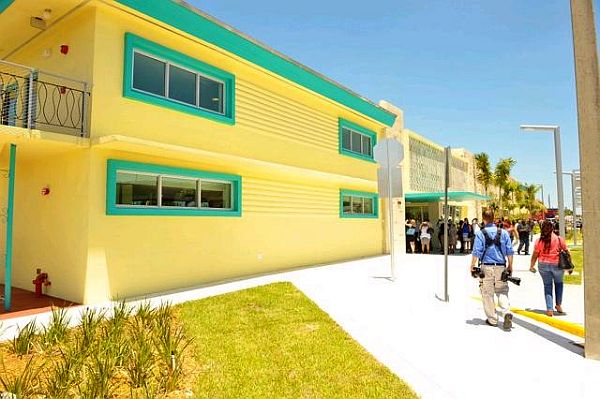 Jay -- What church did you
attend as a child?
Jay -- What church did you
attend as a child?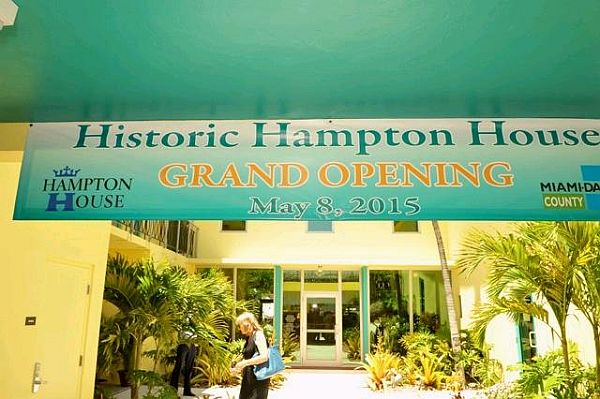
 Jay -- A Jewish couple owned
the original Hampton House. What are their names and are their relatives
still in the Miami area?
Jay -- A Jewish couple owned
the original Hampton House. What are their names and are their relatives
still in the Miami area? Jay -- You turned the project
over to Miami-Dade County because of lack of funding. What concessions
did you have to make to get the county involved?
Jay -- You turned the project
over to Miami-Dade County because of lack of funding. What concessions
did you have to make to get the county involved? Jay -- What is the best way
to contribute to this historic venue?
Jay -- What is the best way
to contribute to this historic venue? The Historic Hampton House served as the setting for the triple Academy-Award nominees flick One Night in Miami which presents a fictional rendition of a historic meeting of Civil Rights icon Malcolm X, legendary soul singer Sam Cooke, three-time boxing world champion Cassius Clay (Muhammad Ali), and football star and actor Jim Brown on the night of February 25, 1964, after Clay's upset victory over then champion Sonny Liston at the Miami Beach Convention Center. This film was directed by Academy Award-Winner Regina King.
The Historic Hampton House served as the setting for the triple Academy-Award nominees flick One Night in Miami which presents a fictional rendition of a historic meeting of Civil Rights icon Malcolm X, legendary soul singer Sam Cooke, three-time boxing world champion Cassius Clay (Muhammad Ali), and football star and actor Jim Brown on the night of February 25, 1964, after Clay's upset victory over then champion Sonny Liston at the Miami Beach Convention Center. This film was directed by Academy Award-Winner Regina King.